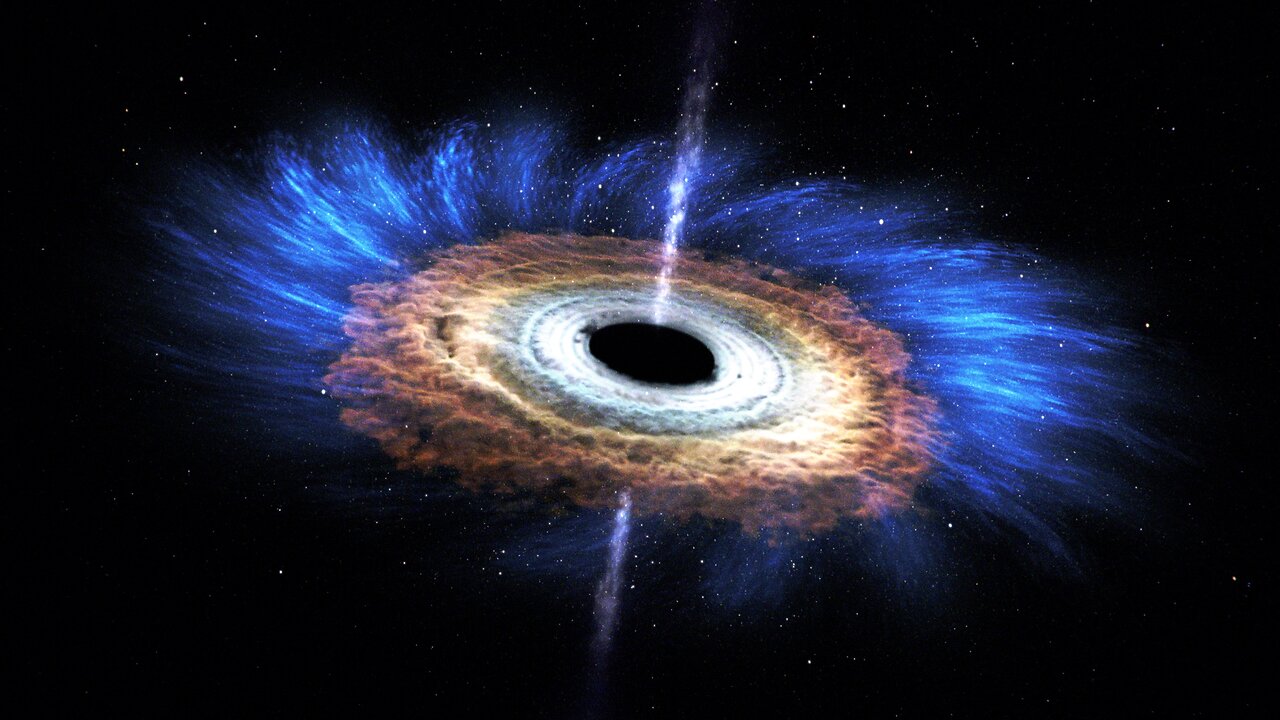Premium Only Content

Cosmic Drama Unveiled: When Black Holes Shred Stars
In this visual representation, we explore a remarkable cosmic phenomenon: when a star ventures too close to a black hole, the gravitational forces at play are so powerful that they tear the star apart. This extraordinary event, known as a "tidal disruption," unfolds in a dramatic manner. As the star gets too close to the black hole, it undergoes a process where some of its shattered remains are catapulted outward at incredibly high speeds, while the rest gets inexorably drawn towards the insatiable gravitational pull of the black hole. This dynamic interaction results in a unique X-ray flare that can persist for several years.
To unravel the mysteries surrounding such events, NASA's Chandra X-ray Observatory, the Swift Gamma-ray Burst Explorer, and ESA/NASA's XMM-Newton spacecraft have come together, each contributing essential pieces to the cosmic puzzle. Their combined efforts shed light on a particular tidal disruption event called ASASSN-14li. This event was initially discovered through an optical survey conducted by the All-Sky Automated Survey for Supernovae (ASAS-SN) back in November 2014. ASASSN-14li unfolded in the vicinity of a supermassive black hole, which is estimated to possess a mass several million times greater than that of our Sun. This cosmic drama played out within the heart of PGC 043234, a distant galaxy located approximately 290 million light-years away.
Astronomers are eagerly searching for more occurrences akin to ASASSN-14li. These events serve as critical testing grounds for theoretical models, allowing scientists to gain deeper insights into how black holes influence their surrounding environments.
During the course of a tidal disruption event, slender strands containing a significant portion of the star's mass plunge toward the black hole. Over time, these gaseous strands converge into a seamless, scorching-hot disk that radiates with intense X-rays. As this disk takes shape, its central region becomes extraordinarily heated, leading to the emergence of a powerful outflow of material known as a "wind," which streams away from the disk.
Credits
NASA's Goddard Space Flight Center.
Brian Monroe (USRA): Lead Animator
Scott Wiessinger (USRA): Lead Producer
Francis Reddy (Syneren Technologies): Lead Writer
Jon Miller (University of Michigan): Lead Scientist
-
 LIVE
LIVE
Spartan
1 hour agoSpartan - Pro Halo Player for OMiT | Scrims vs C9 then ranked
335 watching -
 22:02
22:02
Mrgunsngear
17 hours ago $5.45 earnedHeckler & Koch Full Size VP9A1 F Review: The Best Striker Fired Duty Handgun?
10.2K15 -
 LIVE
LIVE
Gore TV
3 hours ago🔥💥 MY GUN BROKE MID-FIGHT?! 🤯💣 | Division 2 Chaos with a Toy Rifle 😂🔫
124 watching -
 17:14
17:14
JapaNomad - Video Tours
3 days ago $1.89 earnedNissan GT-R R35 2AM Tokyo Expressway Run | Pure Car ASMR | No Music | No Voice | 4K HDR
10.7K2 -
 27:35
27:35
NordicVentures
7 days ago $0.72 earned3 Days Solo on a Island: How to Build a Simple Beach Shelter!
6.12K4 -
![Back from the Beginning! [Elden Ring]](https://1a-1791.com/video/fww1/3e/s8/1/W/K/Z/3/WKZ3y.0kob.1-small-Back-from-the-Beginning-Eld.jpg) LIVE
LIVE
JTtheSG
2 hours agoBack from the Beginning! [Elden Ring]
19 watching -
 LIVE
LIVE
Barneyjack
1 hour agoWarframe LR$/MR34 Game and Giveaways!! Get in here :) :)
53 watching -
 1:46:49
1:46:49
Survival Dispatch
6 days agoThe REAL Truth About Media's Terrorism Coverage vs Reality EP534
10.5K4 -

Pepkilla
2 hours agoCall of Duty Warzone ~ BOT RUNNING
1K -
 1:05:12
1:05:12
Greg Hunter's USAWatchdog.com
22 hours ago100% Chance of Nuclear War – Martin Armstrong
59K48